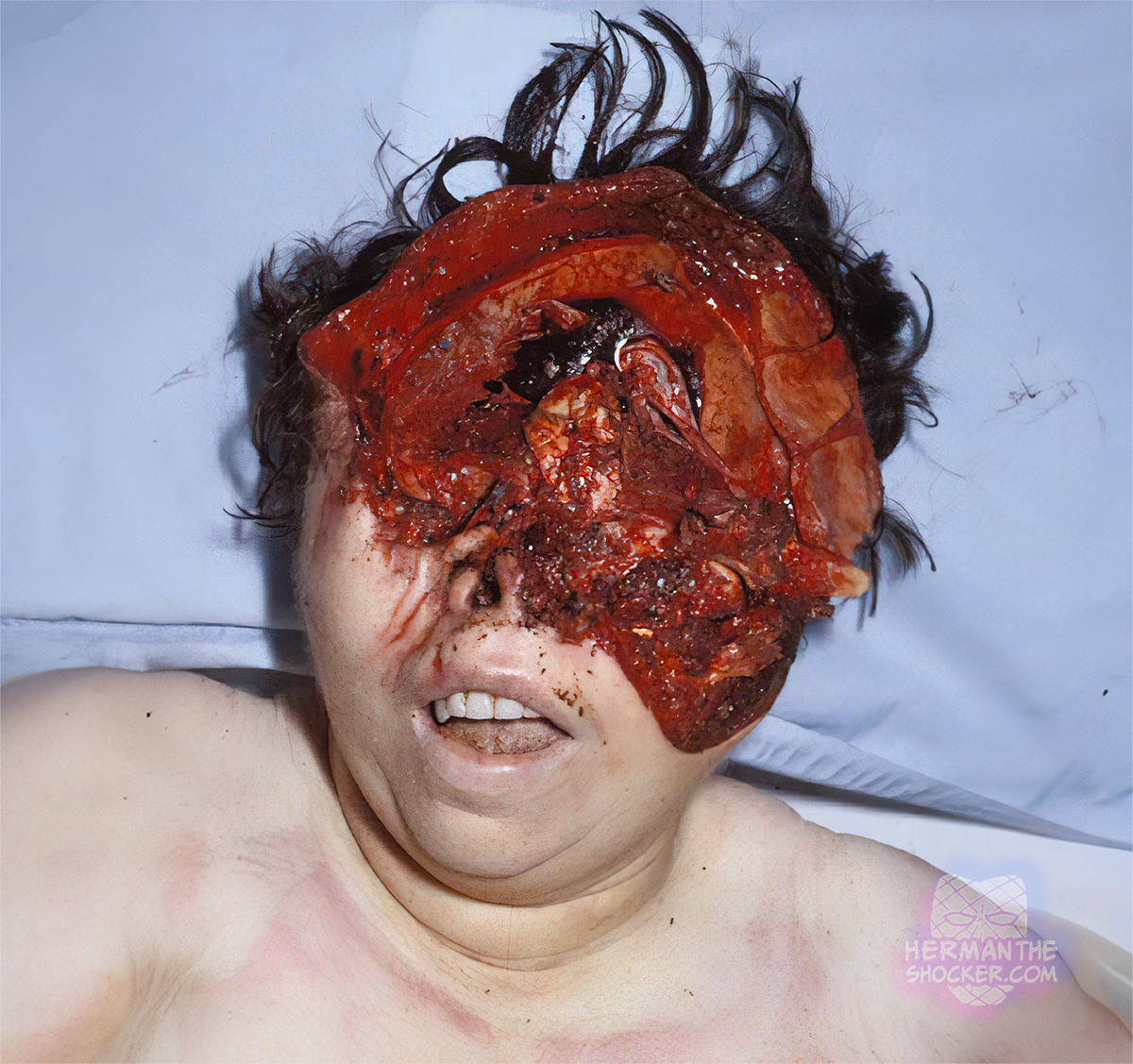Identification may sometimes be challenging when the victim has severe injuries. This individual has facial injuries from a bomb explosion. Visual identification was not possible but since injury was absent to the mouth it was possible to perform a dental comparison and identify the individual. No further info.
In cases where the remains have been badly mutilated or burned, are in advanced putrefaction, or have been submerged in water for a long period of time, the possibility of obtaining any fingerprints of value is quite remote. This is where the forensic odontologist can be of assistance. Using powerful cameras, x-rays, and medical records, he or she can, through examination of the dentition and jawbones of the deceased, provide the investigator with positive identification as well as bite-mark identification. In addition, the forensic odontologist can provide information about the deceased, including age, general facial characteristics, race, socioeconomic group, occupation, or habits.
Latest posts









